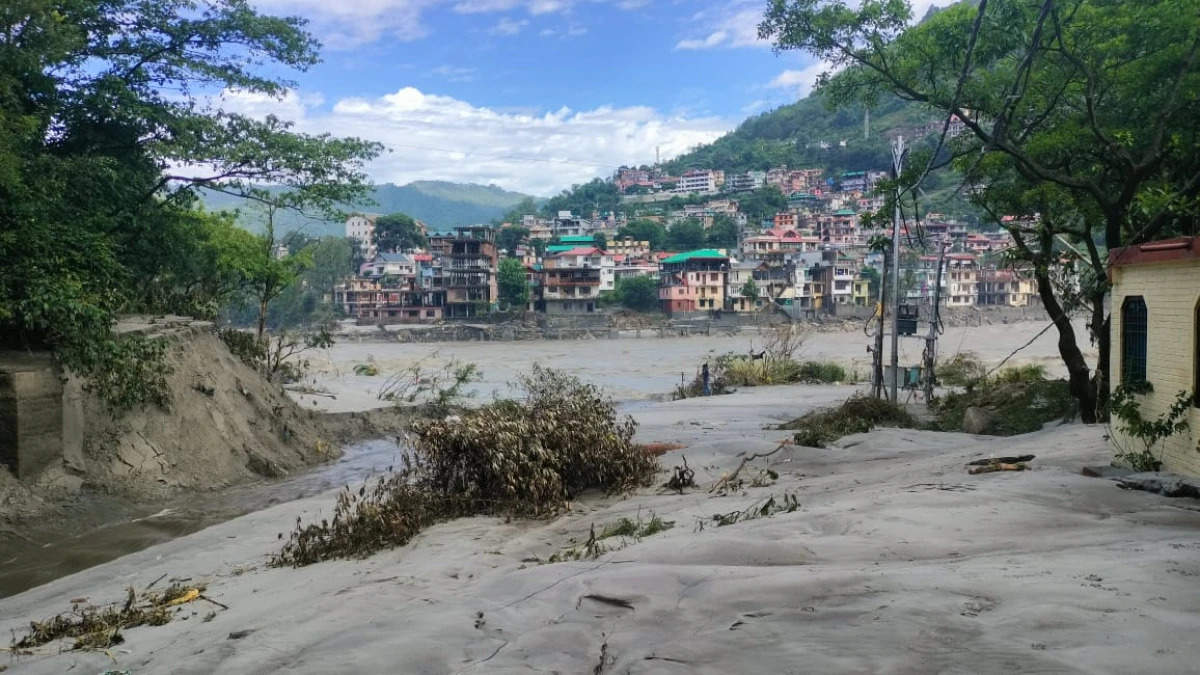Rainfall in Himachal Pradesh and Uttarakhand was caused by a weather phenomenon that moved south: IMD

According to the India Meteorological Department, the monsoon trough, an extended low-pressure region that was north of its usual location and was responsible for the heavy rains that fell on Himachal Pradesh and Uttarakhand, has gradually begun migrating south.
"The Himalayan foothills are where the monsoon trough is located. From August 18, it is anticipated to progressively move south and lie close to its typical location, according to the weather bureau's Tuesday statement.
According to M. Mohapatra, director general of the Met department, the trough has not yet moved to its normal position.
"The monsoon trough is partially located between Meerut and Delhi. Delhi is receiving rain as a result of this. For 1-2 days, there will be patchy rain across Delhi NCR (the national capital region) and east-central India, but the trough will turn northward once more around August 20, according to Mahesh Palawat, vice-president of climate and meteorology at private forecasting company Skymet Weather Services. "Thereafter, we can anticipate severe rain across the Himachal Pradesh and Uttarakhand states once more."
Why are Himachal Pradesh and Uttarakhand's hill states experiencing heavy rainfall?
According to the weather office, a cyclonic circulation is present over south-west Bangladesh and the area around it, while a western disturbance is having an effect on the western Himalayas. Because of this, it predicted that Himachal Pradesh would continue to have isolated but significant rainfall over the next two days and Uttarakhand and northeast India during the following four to five days.
"The present monsoon break phase is one of the longest on record; it has already lasted for 10 days and is expected to last another 2-3 days. The longest stretch of breaks was from 18 July to 3 August in 1972, a year with insufficient rainfall. 24 days were considered breaks in July 2002, according to M Rajeevan, a former secretary for the ministry of earth sciences.
As of Wednesday, there is a chance that rainfall would gradually rise over eastern and adjacent central India. In the upcoming 4-5 days, it was predicted that the rest of the country would continue to see moderate rainfall.
Since June 1, there has been a 4% deficit in rainfall over the nation, with a 10% deficit over the southern peninsula, an 18% deficit over eastern and northeastern India, a 13% surplus over northwest India, and average rainfall over the centre of the country.
The monsoon trough's northward migration and its interaction with a weak western disturbance are to blame for the torrential rains on Monday that caused landslides, building collapses, and damage to roads and other infrastructure across Himachal Pradesh and Uttarakhand.
The trough was migrating northward from its regular position, going largely across the Indo-Gangetic plains up to the Bay of Bengal, as previously reported by HT. This meant that the monsoon had entered a weak phase and there would be moderate rainfall over the plains.
.png)